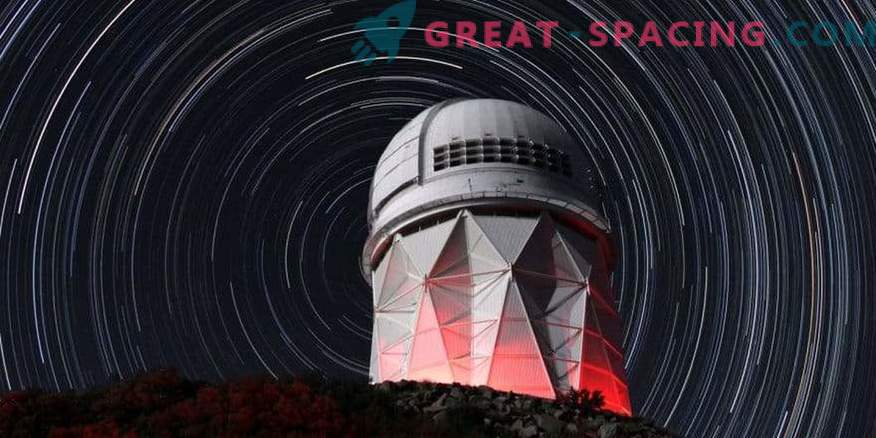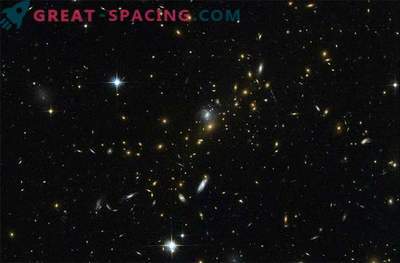
45 years ago Mayall was one of the largest optical telescopes in the world. His goal was to help scientists find answers to various astronomical questions. He played an important role in many discoveries, including the establishment of the role of dark matter in space and the definition of the scale and structure of the Universe.
Preparing to study dark energy
Today it loses the status of a “universal research instrument” and returns to its original mission, which will solve one of the most important problems in physics: understanding the mysterious nature of dark energy, accelerating the expansion of space.
To prepare for the new mission, we decided to temporarily close the Mayall telescope. A major overhaul will last for 15 months, during which a Dark Energy Spectroscopic Instrument (DESI) spectroscopic instrument will be installed - a massive optical spectrometer capable of simultaneously tracking the spectra of 5000 astronomical objects.
Update and Transform
The entire upper part of the telescope (in terms of weight resembles a school bus) together with the secondary glass and a digital camera will be replaced by DESI. A large crane will hook this part of the telescope through the observation slot in the dome. This is an important day, as the old equipment is eliminated and the annual modernization procedure begins. The project has 465 researchers from 71 institutions.

The moon illuminates the dome of the 4-meter Mayall telescope in a photograph taken February 6, 2018
Kitt-Peak employees are looking forward to starting work. They are happy that the main asset of the National Science Foundation mayall telescope can be used to solve global issues of the universe.
Second stage in career
Thanks to its robust design and the ability to quickly review a huge sky area at a time, Mayall becomes an ideal candidate for DESI. Before the final decision, scientists had to consider several options, since the device itself weighs 9 tons.
Luckily, Mayall was originally prepared for heavy loads and introduced a wide field of view technology, which is quite a rare combination for large telescopes. Expanding the field of view is 40 times the area of the full moon, which will allow DESI to display approximately 1/3 of the sky.
From photographic plates to robotic eyes
Mayall will be an ultra-high-tech telescope, far from the initial possibilities. The device was launched in 1973, and the first images were made on large glass photographic plates. After installing DESI, the telescope will receive 5,000 rotating robots, each of which synchronously moves to track the preprogrammed sequence of galaxies and quasars. Fiber optic cables will transport light from these instruments to 10 spectrographs. The new spectrum will be captured every 20 minutes.
For 5 years of operation, DESI will be able to explore 30 million galaxies and quasars. This will allow to form the largest map of the Universe at a distance of 10 billion light years. Now Mayall is engaged in scientific training, studying the sky. This is one of 4 surveys that DESI uses to select target quasars and galaxies.
The Kitt-Peak National Observatory is part of the National Optical-Astronomical Observatory and collaborates with the National Science Foundation.











































